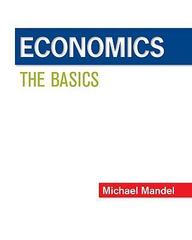Calculate and discuss the following questions thank you
3. In Equation 15.5, if p = 0, what are the implications for (a) Po and Pi ? Ro and Ri ? (Problems 4, 5 and 6 are based on Table 15.3 in the textbook.) 4. Explain, with diagrams, why a monopolistic non-renewable resource market is biased towards conservation and therefore will increase the 'life' of the resource. 5. In the case of perfect competition, if the private discount rate is higher than the correct social discount rate, explain, with diagrams, why the market will exhaust the resource too quickly. .1.1 6. Discuss, with diagrams, the consequences of the discovery of North Sea oil for (a) the price and output levels for the oil market; (b) the date of exhaustion of oil reserves. What will be the probable path over time of oil prices if there are frequent discoveries of oil?2. The version of Hotelling's rule given in Equation 15.5 requires the net price to grow proportionately at the rate p. Under what circumstances would this imply that the gross price also should grow at the rate p?4. The notion of sustainability is used differently in economics than in the natural sciences. Explain the meaning of sustainability in these two frameworks, and discuss the attempts that have been made by economists to make the concept operational. We will leave you to do this without any extra help from us. Relevant material can be found in Chapters 2, 4 and 19. Problems 1. Consider two consecutive years, labelled 0 and 1. You are currently at the start of year 0. The following information is available. There is a single fixed stock of a non-renewable resource; the magnitude of this stock at the start of year 0 is 224 (million tonnes). The inverse resource demand functions for this resource in each of the years are Po =a-bRo and Pi=a-bRI in which a = 107 and b = 1. The constant marginal cost of resource extraction is 5. All (non-physical) units are in European units of utility. The social welfare function is discounted utilitarian in form, with a social utility discount rate of 0.1. Given that the objective is to maximise social welfare over periods 0 and 1, calculate the amounts of resource that should be extracted in each period, subject to the restriction that at least 104 units of the resource should be left (unextracted) for the future at the end of period 1. What is the resource price in each period (a) in utility units; (b) in Euros, given that U = log(C), where U is utility units, log is the natural logarithm operator, and C is consumption (or income), measured in Euros?1. Discuss the merits of a proposal that the government should impose a tax or subsidy where an non-renewable resource is supplied monopolistically in order to increase the social net benefit. 2. 'An examination of natural resource matters ought to recognise technical/scientific, economic, and socio-political considerations.' Explain. 3. 'The exploitation of resources is not necessarily destructive .need not imply the impoverishment of posterity .. It is the diversion of national income from its usual channels to an increased preservation of natural wealth that will harm posterity.' (Anthony Scott). Explain and discuss










